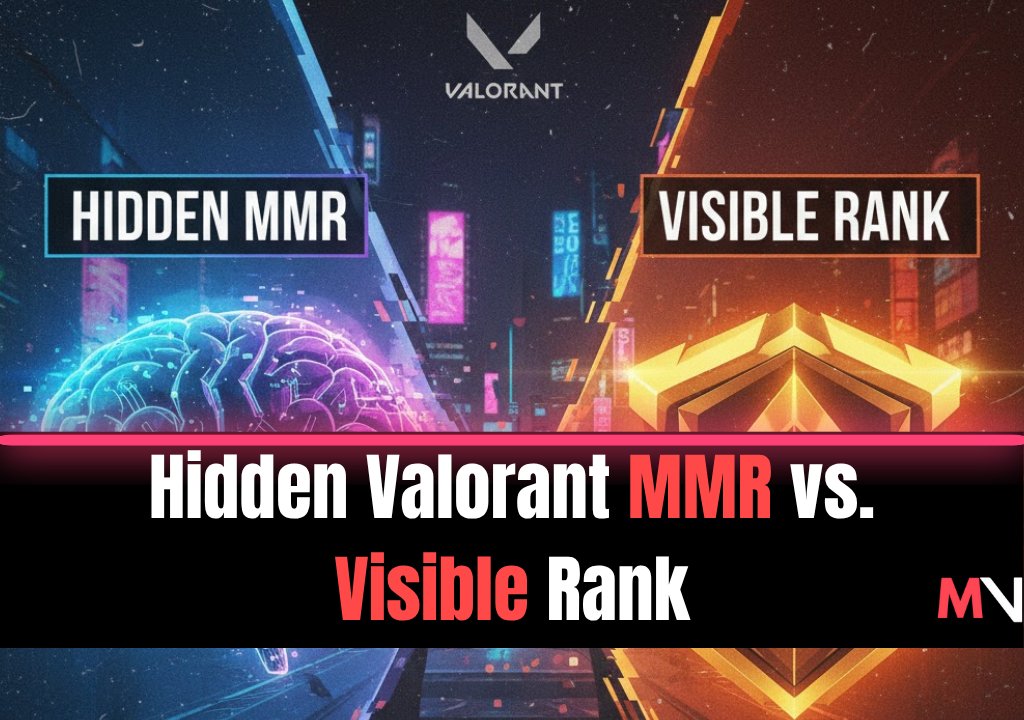Hidden Valorant MMR vs. Visible Rank
Valorant’s ranked system has always been a topic of debate — and in 2025, the gap between hidden MMR (Matchmaking Rating) and visible rank remains a mystery for many players. While you might see yourself sitting in Platinum, your actual MMR could belong to Diamond, or worse, Gold. Understanding why these two values don’t always align is key to mastering the ranked grind and making sense of Riot’s competitive matchmaking.
🎯 What Is Hidden MMR?
Your MMR is an invisible number that determines how strong the system believes you are. It influences:
- Who you get matched with and against.
- How much RR (Rank Rating) you gain or lose per match.
- The average skill level of your lobby.
Every win or loss shifts your MMR, but not always at the same rate — it depends on your performance, consistency, and opponent strength.
🧩 Visible Rank vs. MMR: Understanding the Difference
Your visible rank (e.g., Platinum 2 or Diamond 1) is just a label — it’s a reflection of your current RR within a division. However, MMR sits behind the scenes, controlling how fast or slow you climb.
- High MMR but low rank: You’ll gain a lot of RR per win and lose very little.
- Low MMR but high rank: You’ll get small RR gains and heavy RR losses.
This balancing act keeps the ranked ladder stable and prevents players from overinflating ranks they haven’t earned through consistent gameplay.
⚙️ Why They Rarely Match in 2025
Riot has continued refining Valorant’s competitive system, but several factors still create discrepancies between MMR and visible rank:
1. Performance Weighting
While wins matter most, Riot’s system still considers individual impact. A player who constantly top-frags or performs well against stronger opponents may gain MMR faster than RR.
2. Lobby MMR Variance
If you’re placed in games with players slightly below or above your skill level, your MMR adjusts differently from your RR. This often leads to lopsided point changes.
3. Recent Patch Adjustments
Meta changes, agent buffs, and nerfs can cause temporary instability. Players adapting quickly to new metas tend to climb in MMR faster than others.
4. Decay and Inactivity
Even though Valorant doesn’t have traditional rank decay, extended inactivity lowers your visible rank while your hidden MMR remains relatively stable — creating temporary mismatches.
5. Smurf and Placement Corrections
Riot’s detection system may rapidly increase or decrease hidden MMR for new or returning accounts, resulting in inconsistent ranks during recalibration.
🧠 How to Track and Balance Your MMR
Since Riot doesn’t publicly reveal MMR, players rely on third-party tools and personal consistency. Here’s what helps:
- Track your win/loss RR averages: If you’re gaining +25 and losing -15, your MMR is higher than your rank.
- Monitor consistency: Avoid high variance in match results.
- Play in stable queues: Playing during peak hours ensures balanced matchmaking.
- Avoid tilt queues: Consecutive losses lower MMR faster than most players expect.
🚀 How to Sync Your Rank with Your Real Skill Level
- Focus on long-term performance, not one streak.
- Keep improving micro-skills: crosshair placement, utility usage, and map awareness.
- Duo with teammates of similar MMR for balanced matchmaking.
- Review your games to fix consistent mistakes that slow rank growth.
Remember — your true rank is your MMR, not your badge. The faster you align both, the more consistent your climb will be across seasons.
💡 Track Your True MMR and Climb Smarter
If you want to stop guessing your hidden MMR and start tracking real performance trends, visit https://n1boost.com/
. With data-backed insights, performance analytics, and professional boosting or coaching services, you can align your hidden MMR with your visible rank faster and more efficiently. Play smarter, climb higher, and take control of your ranked progress today.
Tags

Author




